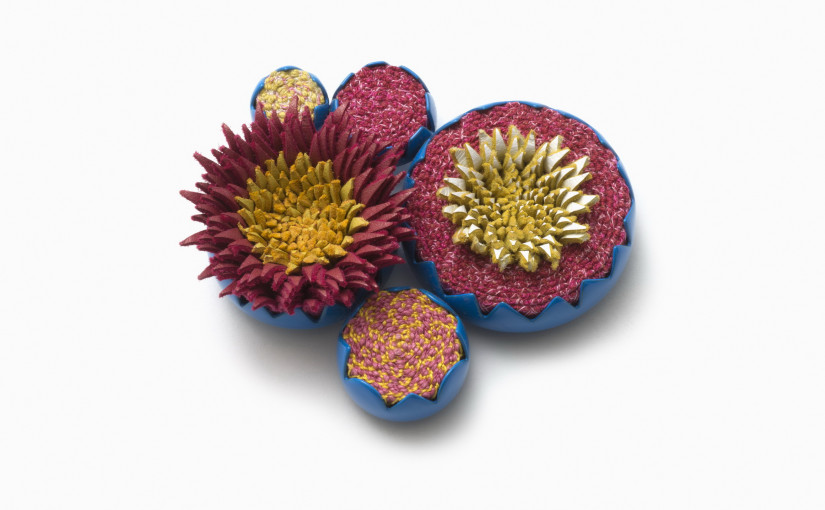As a member country of the World Crafts Council Asia Pacific, Australia is involved in the development of the Encyclopedia of Crafts in the Asia Pacific Region. This volume is designed to promote living craft heritage in a rapidly developing part of the world.
This prompts the question – what are Australian crafts? Other countries of the Asia Pacific, such as India and Japan, are blessed by a treasury of unique craft traditions. Australia does not have the same depth of traditions for a complex of historical and cultural reasons.
Yet part of national identity is the understanding of what makes a culture unique in the world. In sport, Australia has a unique code of football, as well as particular prowess in cricket and rugby. Crafts are intrinsic to the idea of a civilisation, which involves the evolution of techniques for manipulating the material world. Different cultures have make distinct contributions to this, such as Japan’s understanding of textile dyeing, or China’s skill in porcelain ceramics.
But as part of our living heritage, crafts are also vulnerable to neglect. We are familiar with this situation in the Australian languages. The loss of Aboriginal languages in Australia is relatively irreversible. When a language is forgotten it diminishes our ways of understanding the world. In the same way, loss of skills in manipulating materials reduces our expressive capacity. If we lose the technique of weaving grass, we no longer have that material in our artistic repertoire.
Australian crafts represent what we make of the material world in which we find ourselves. As a settler colony, there has been pressure to limit our energies to materials used in the ‘home country’, such as fine European timbers, precious metals and gems, willow and porcelain. By contrast, Australian materials can seem crude and unwieldy. Rather than re-create an imitation Europe, the Australian challenge is to accept our environment and learn to appreciate its creative potential.
But to understand our crafts today involves consideration of our settler colonial heritage. Historically, there are three major trajectories for our crafts:
- Pre-contact crafts are tied to traditional Aboriginal practical and ceremonial needs. These involve purely Australian materials and are unique. The fibre fish trap is an example of this.
- Settler/missionary crafts involve the adaptation of indigenous traditions to the materials and techniques introduced by European settlers. These include the adaptation of fibre skills to basketry in central Australia.
- Modern crafts are more internationally engaged as part of the studio movement that began in the 1960s, where craft involved the production of original art works. There are practically no unique forms in Australia, though there are particular strengths and distinct trends, such as Susan Cohn’s aluminium metalware or Klaus Moje’s coldworking glass technique.
So what would Australia’s entry be in the craft encyclopedia?
A working list of crafts currently practised in Australia
- Aboriginal & Torres Strait Islander
- Fibre: Bush jewellery
- Fibre: Eel traps
- Fibre: Bi-conal baskets
- Fibre String figures
- Emu shell carving
- Jewellery: Carved shell jewellery
- Wood: Boomerang making
- Wood: Didgeridoo making
- Wood: Poker work
- Non-indigenous
- Leather: plaiting and whip-making
- Leather: saddlery
- Textiles: hats in fur and straw
- Wood turning
- Wood: Furniture
- Both – Studio crafts
- Ceramics
- Fibre: Grass sculptures
- Jewellery and Metal
- Textiles and fibre
- Tapestry weaving
- Basket making
- Glass
Is there anything missing? Comments are most welcome.
Featured image above, ‘Flowering cluster’, a brooch by Vicki Mason


I’d like to see embriodery, piecing and quilting and related crafts added to the list. Australia has a well extablished network of groups sharing and building their craft skills in these areas and provide women in particular, social and economic opportunities through workshops, retreats and markets. Similarly the most traditional knitting, crochet and lace making, having seen a resurgance of interest and engagement over the last few years deserve at least a mention on your list of crafts practiced in Australia. All have the potential to build on the traditions of our society and link us back to our past and the experineces of others.
Regards
karen
Thanks for that feedback. That’s an important point and it will be addressed.
The Tasmanian Aboriginal tradition of shell necklace making should be added to your list
A good point. The exhibition by Lola Greeno travelling around Australia is great testament to the vitality of this craft.
Hello dear
My wife and i going to immograte to australia ,is there any job opportunity for taking and reside there.
I mean is it possible to subsist there by handi craft.
Thanks alot
Dear Mohammad
Can you say what kind of handicraft you know?
Hi,
I think there are still a lot of ideas missing, such as pebble art, painted pots, holy book covers, goodie bags, rugs, bags n pouches (cross stitched, embroidered, block printed, stenciling/fabric painted wall hangings, small cushions, floor cushions, sheets and pillow covers, curtains, table mats, runners, stoles, short kurties n t-shirts etc).
Paper work including cards, birthday banners n other decorations, book marks, kids informative activities, soft board decorations, flower making etc.
Wooden bird houses, shoe n book racks, toy storage boxes n trolleys, bunk beds ideas, small n easily adjustable furniture ideas etc.
There are too many different ideas in wall hangings as well.
I am addicted to handicrafts n I wish to be a member of some reputable team/organization soon. If there is any opportunity , please do let me know.
Thanks.
I think it is odd that embroidery, crotchet knitting and sewing are not more prominently represented here. They are widely practiced here. Whilst many people use commercial patterns for these craft activities many embellishments are unique and some practitioners develop their own designs and patterns. There seems to be some snobbery in the art world about these craft activities and the work that these crafts people produce. I don’t know why but perhaps some throw back to past centuries when only the work of men (even in paintings drawings and sculpture) was viewed a worthy of high praise 🧶knit on folks and ignore mainstream bias
Feel free to promote these crafts in our Craft in Australia Facebook group or suggest links in these comments. We welcome this discussion.